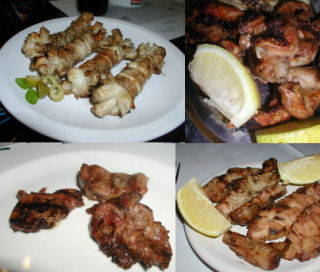NEWS
March 10, 2006
 It’s a shame that the words offal and awful are virtual homonyms in the English language. It immediately gives some leverage to the folks who fall into the camp of “I wouldn’t touch a plate of that with your tongue if I was paid to do it”. Versus, of course, the camp that others fall into where the mere mention of one of these body parts is enough to cause Pavlovian salivation. Even in the Argentine culture (and the Italian culture from which many of their recipes derive) opinion, no, vehemence pro or con in regard to the “fifth quarter” as the Romans called it, abounds.
It’s a shame that the words offal and awful are virtual homonyms in the English language. It immediately gives some leverage to the folks who fall into the camp of “I wouldn’t touch a plate of that with your tongue if I was paid to do it”. Versus, of course, the camp that others fall into where the mere mention of one of these body parts is enough to cause Pavlovian salivation. Even in the Argentine culture (and the Italian culture from which many of their recipes derive) opinion, no, vehemence pro or con in regard to the “fifth quarter” as the Romans called it, abounds.
Most everyone has tried something like liver – whether calf, beef, duck, or chicken – in one guise or another. On the chicken front, gizzards and hearts are common enough; perhaps even a chicken foot or two. When it comes to other animals and other organs, there are certainly things like steak and kidney pie out there, but here comes the moment when the two camps divide and begin to wage war. “If I only had a heart… a brain… the nerve…” takes on a whole new meaning from its connotations in the land of Oz. Here, we want them seasoned, grilled, sauced, and served.
For those of us in the pro camp, variety meats are not just the spice of life, they are the pinnacle of its culinary possibilities. For those who have yet to try them, or are unfamiliar with what is available, this basic guide, more or less from one entrail to the other.
Chinchulines are the small intestines
Chotos are a strangely braided larger part of the small intestine
Corazón is the heart
Criadillas are testicles, or if it makes you feel better, prairie or Rocky Mountain oysters
Higado is your already probably familiar liver
Mollejas de corazón are sweetbreads from the lower regions, the pancreas
Mollejas de cuello are sweetbreads from the neck, or, the thymus glands
Mondongo is tripe
Pulmones are lungs
Riñones are kidneys
Seso is the brain
Tripa is the stomach (not tripe, as you might think)